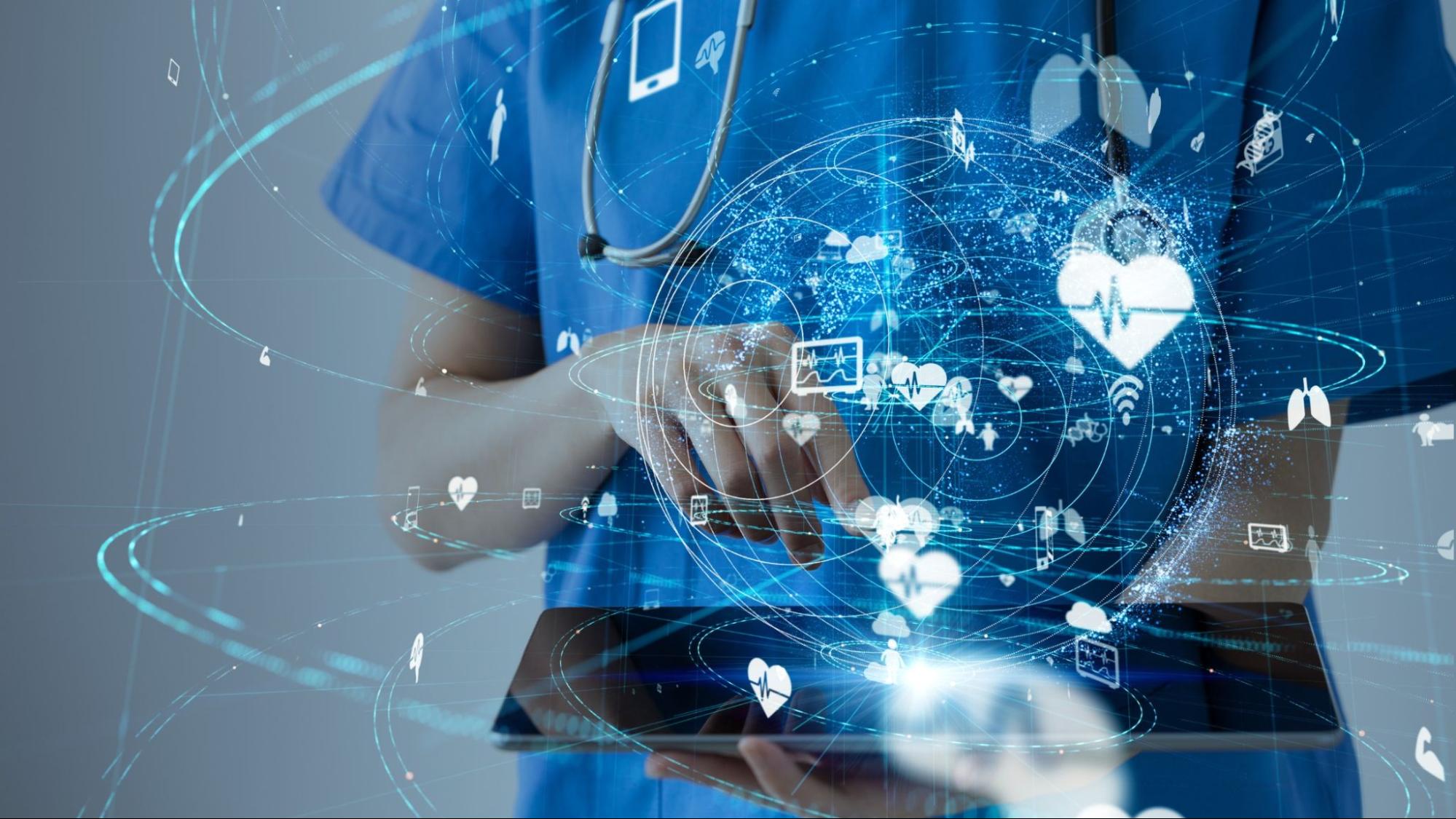
TNN Bulletin
Nursing and technology have always been intertwined, and in recent years, the role of technology in nursing practice has only become more important. With the rise of electronic health records, telemedicine, and other technological advancements, nurses are better equipped than ever to provide high-quality care to their patients. In this article, we will explore the definition of technology in nursing, the importance of technology in nursing practice, and provide a brief overview of some of the ways that technology is improving the field of nursing.
Technology in nursing refers to the use of electronic and digital tools, systems, and devices to improve patient care, workflow, and efficiency. These tools can range from wearable monitors and wireless communication devices to electronic health records and computerized medication dispensing systems.
The importance of technology in nursing practice cannot be overstated. Technology has the potential to improve patient outcomes, reduce medical errors, and increase efficiency in healthcare settings. For example, electronic health records allow nurses and other healthcare providers to access patient information quickly and easily, reducing the likelihood of errors and streamlining patient care.
Additionally, telemedicine and remote monitoring technologies have made it possible for nurses to provide care to patients who live in remote or underserved areas, improving access to healthcare for all patients.
In this article, we will dive deeper into the ways that technology is transforming the field of nursing. We will explore some of the most exciting new technologies, including virtual reality training tools, robotic-assisted surgery, and genetic testing. We will also discuss some of the challenges and limitations of technology in nursing practice, and how nurses can work toward ensuring that patients receive the best possible care with the help of technology.
Benefits of Technology in Nursing
- Improved Patient Outcomes
Technology has revolutionized the healthcare industry, and nursing is no exception. The emergence of healthcare technology has transformed the way patient care is delivered, resulting in improved patient outcomes. With technology, nurses can now access patient records and medical data with ease, helping them to provide more personalized and efficient care.
Additionally, nurses can use technology to monitor patients remotely, reducing the need for frequent in-person visits. This technology has helped nurses identify potential health issues and respond quickly to the patient’s needs, leading to better and more effective care. Moreover, technology has enabled nurses to collaborate with other healthcare professionals and share patient information, allowing for better-coordinated care and improved outcomes. Overall, the integration of technology in nursing has significantly improved patient outcomes and continues to play a crucial role in advancing healthcare.
- Enhanced communication between healthcare professionals
Moreover, technology has brought numerous benefits to the nursing profession, including enhanced communication between healthcare professionals. Modern technology enables nurses to access and share electronic health records, which enables them to communicate with doctors about their patients’ health status, care plans and prescriptions quickly and securely. Nurses can also easily coordinate care with other healthcare providers, including social workers, physical therapists, and occupational therapists, using teleconferencing or video conferencing technology, which eliminates the need for in-person visits, reduces healthcare costs, and allows professionals to provide care remotely.
Furthermore, technology has improved the speed and accuracy of communication between healthcare providers, promoting faster decision-making, treatment, and positive patient outcomes. With enhanced communication capabilities, healthcare professionals can provide better care, communicate more effectively, and improve the overall quality of healthcare services.
- Increased Efficiency in Healthcare Delivery
Technology has brought significant improvements to the healthcare industry, including increased efficiency in healthcare delivery. Technology has allowed nursing professionals to automate many routine tasks, such as patient record-keeping, appointment scheduling, and medication management. Nursing staff can now access patient information instantly, regardless of their physical location, and utilize mobile devices to manage patient care remotely. Additionally, automated systems have made it easier to track the delivery of medical supplies, allowing nurses to focus on more complex tasks, such as providing personalized patient care. Moreover, telehealth technology has enabled nurses to provide care to patients in remote locations, reducing travel time and increasing access to healthcare for underserved communities. Overall, technology has enabled nursing professionals to work more efficiently, avoid errors, reduce healthcare costs, and increase accessibility to healthcare for patients in need.
- Improved patient safety through the use of electronic health records (EHRs)
Electronic health records (EHRs) are a key component of healthcare technology, and they have brought numerous benefits to the nursing profession. EHRs provide nurses access to a patient’s complete medical history, including their health conditions, medications, and allergies, enabling them to provide safe and effective care. With EHRs, nurses can identify and monitor changes in a patient’s health, and update their medical chart in real-time, eliminating errors that can occur with traditional paper charts.
Moreover, EHRs have features that alert nurses to potential drug interactions, reducing the risk of medication errors. Nurses can use the system to make sure that the patient receives the correct dosage of medication on time. Additionally, EHRs make it easier to share a patient’s medical information with other healthcare providers, which can help ensure continuity of care and reduce the risk of medical errors. Overall, the use of EHRs has improved patient safety, efficiency, and outcomes, making it an essential tool in the nursing profession.
Types of Technology Used in Nursing
As the healthcare industry continues to evolve, technology is playing an increasingly critical role in patient care. Nursing, in particular, has been impacted greatly by the integration of technology into daily practices. From recording and managing patient information to remotely monitoring patients, there are a variety of types of technology used in nursing.
- Electronic Health Records (EHRs)
Electronic Health Records, or EHRs, are one of the most important types of technology used in nursing today. These electronic records allow nurses and other healthcare providers to access patient information quickly and easily, no matter where they are located. EHRs contain vital patient data such as medical history, medications, test results, and allergies. The use of EHRs has revolutionized nursing practice, improving accuracy and promoting patient safety by reducing errors and ensuring that critical information is always available when and where it’s needed.
- Telemedicine
Telemedicine is one of the most exciting types of technology used in modern nursing practice. It involves the use of digital tools and communication technologies to provide remote healthcare consultations and services to patients who are unable to come to a clinic or hospital in person. Telemedicine can take many forms, such as video conferencing, remote monitoring devices, and online portals for patient-doctor communication. It offers a number of advantages, including increased access to care for patients in rural or remote areas, reduced costs for both patients and providers, and improved patient outcomes due to better monitoring and follow-up care. For example, telemedicine can be used to deliver rehab services, behavioral health treatment, or even some routine check-ups like prescribing medication. Telemedicine is undoubtedly one of the most exciting developments in nursing practice in recent years, offering the potential to revolutionize the way that healthcare is delivered and accessed by patients.
- Wearable technology
Wearable technology is a type of technology that has become increasingly popular and useful in nursing practice. Examples of wearable technology include smartwatches and fitness trackers with health monitoring capabilities. These devices can track vital signs and other health data in real-time, allowing nurses to monitor their patients remotely and provide timely interventions to prevent complications. Wearable technology is used to monitor the patient’s heart rate, breathing rate, and activity and movement levels. Nurses can use this data to detect early warning signs of problems, helping to prevent complications and avoid hospitalizations. Additionally, wearable technology can help patients stay engaged and motivated in their recovery, by encouraging them to track their progress and providing feedback on their performance.
- Mobile devices and applications
Mobile devices and applications have had a significant impact on nursing practice in recent years. Nurses now use mobile devices like smartphones and tablets to access information, record data, and communicate with patients and other healthcare providers. Nursing apps have also become increasingly popular, allowing nurses to perform a variety of tasks such as medication administration, monitoring, and charting from their mobile device. These apps can also help nurses stay organized and up-to-date with the latest research and best practices in their field.
One of the most significant advantages of using mobile devices and apps in nursing practice is the ability to access information quickly and easily, no matter where the nurse is located. This improves the efficiency of nursing care, reduces errors, and helps to ensure that the patient receives the most appropriate care possible. However, it’s important to consider the security aspect of using mobile devices and applications, particularly in terms of patient data and privacy. With proper security measures in place, mobile devices and apps can be a valuable tool for nurses, enhancing communication and improving the quality of care provided to patients.
- Medical imaging technology
Medical imaging technology is a critical tool used in nursing practice to diagnose and treat a variety of health conditions. This technology includes X-rays, CT scans, MRIs, and ultrasound, among others. These imaging tools help nurses and other healthcare providers to see inside the body and identify any abnormalities or issues that may be present. Medical imaging technology can be used for a variety of purposes, including diagnosing and monitoring cancers, bone fractures, heart disease, and other health conditions.
Challenges in Implementing Technology in Nursing
Advancements in technology have transformed the healthcare industry and have the potential to greatly improve patient care. However, implementing technology in nursing can bring about its own set of challenges. Among these challenges include resistance to change from healthcare professionals, technological limitations, privacy, and security concerns, and training and education of healthcare professionals.
- Resistance to change
One of the major challenges in implementing technology in nursing is resistance to change from healthcare professionals. Many nurses have developed their ways of working over several years and may feel uneasy about adopting new approaches. They may perceive that the addition of technological tools may disrupt their workflow, impact their relationship with patients, and increase their workload.
- Technological limitations
Another significant challenge in implementing technology in nursing is technological limitations. The healthcare industry relies heavily on technology, and there are numerous technological tools available designed to improve patient care. However, the implementation of such technologies can be impacted by several factors, such as compatibility with existing systems, cost, safety concerns, and technical issues. Furthermore, technological tools may not be universally effective or suitable for all patients or healthcare settings. These limitations can cause delays in the adoption of new technologies and, in some cases, may necessitate costly custom solutions that may not be sustainable over the long term.
- Privacy and security concerns
Privacy and security concerns represent another significant challenge in implementing technology in nursing. Healthcare professionals must take great care to protect patient privacy and safeguard confidential medical information against unauthorized access or data breaches. As technological tools can make data more accessible and easier to share, there is a need for strict controls and regulations governing patient data. Additionally, there is a risk that patients may feel uncomfortable about sharing their information in a digital format or may be concerned about the potential misuse of their data.
- Training and education of healthcare professionals
Lastly, the training and education of healthcare professionals themselves represent another significant challenge when implementing technology in nursing. Healthcare professionals must be adequately trained on any new technologies and must maintain the skills necessary to use them effectively. However, healthcare organizations often face significant resource constraints that can impact their ability to provide ongoing training and support for healthcare professionals. Additionally, the speed at which technology in healthcare is evolving means that healthcare professionals must continuously update their skills to maintain the highest level of patient care. Therefore, training programs must be established for healthcare professionals to ensure that they have the necessary skills to apply the new technology, support patients, and achieve optimal patient outcomes.
Future of Technology in Nursing
The field of nursing is changing rapidly with the integration of emerging technologies that are transforming the way nurses provide care. From telehealth to artificial intelligence, technology is revolutionizing nursing practice and education. As technology continues to advance, it is becoming increasingly important for nurses to stay up-to-date with new tools and techniques to improve patient outcomes. This is where continued professional development comes in, enabling nurses to adopt new technologies and stay ahead of the curve in a rapidly evolving field.
- Emerging technologies in nursing practice
Emerging technologies are rapidly transforming the field of nursing, opening up new possibilities for patient care and clinical practice. One such technology is wearable medical devices, which enable patients to monitor their health and receive continuous care outside of a clinical setting. Telehealth technology is also becoming more common, allowing nurses to conduct virtual consultations and monitor patients remotely. Artificial intelligence is being utilized to analyze patient data and identify potential health issues before they become serious. And as robotics technology improves, nurses may soon be able to delegate certain tasks to robots, freeing up time for more complex tasks. These emerging technologies are just the beginning, and as they continue to evolve and expand, they will have a profound impact on nursing practice in the years to come.
- Integration of technology in nursing education
The integration of technology in nursing education is essential to prepare future nurses for the field’s changing landscape. As technology continues to advance, nursing schools are increasingly using simulations, virtual labs, and other digital tools to train students. These resources provide a safe environment where students can practice clinical skills and problem-solving techniques without putting real patients at risk. In addition, technology allows for more flexible and personalized learning, enabling students to access course materials and lectures from anywhere, at any time. As the demand for nurses with technological skills grows, it’s critical that nursing education stays current with the latest technologies and trends to ensure graduates are equipped with the knowledge and skills they need to succeed in the field.
- Importance of continued professional development in technology use
Continued professional development is crucial for nurses to stay up-to-date with the latest technologies and their applications in nursing practice. With technology evolving rapidly, it’s essential that nurses engage in lifelong learning to maintain their skills and knowledge. In addition, continued professional development enables nurses to develop new competencies and adapt to changing patient needs and health care environments.
In conclusion, the role of technology in modern nursing practice cannot be overstated. With the rapid advancements in technology, nurses can now provide safer and more efficient patient care. Technology has made it possible to improve patient outcomes, reduce medical errors, and streamline workflows in healthcare facilities. Nurses who embrace technology in their practice can benefit from enhanced communication, improved data management, and increased patient satisfaction.
Therefore, it is crucial for nurses to embrace technology in their practice. To ensure that technology is used effectively, healthcare organizations need to provide adequate training and support for nursing staff. Nurses should also keep up-to-date on new technologies through continuing education programs and professional development opportunities. By embracing technology, nurses can continue to deliver quality patient care in the constantly-evolving healthcare landscape.
It is imperative that nurses embrace technology in their practice to provide the best care possible to patients. Healthcare organizations must prioritize the adoption of new technologies and provide the necessary training and support to nursing staff to facilitate the use of cutting-edge tools and systems. Embracing technology in nursing practice will undoubtedly pave the way for a safer, more efficient, and patient-centered healthcare system.







